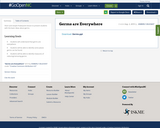
Short and simple Powerpoint lesson to present students with the basic ideas about germs.
- Subject:
- Healthful Living
- Science
- Material Type:
- Lesson
- Date Added:
- 08/03/2019

Short and simple Powerpoint lesson to present students with the basic ideas about germs.
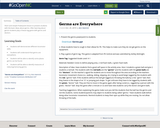
Short and simple Powerpoint lesson to present students with the basic ideas about germs. After learning about germs students play a freeze tag game with germs and doctors.
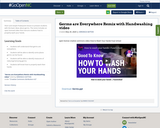
Short and simple Powerpoint lesson to present students with the basic ideas about germs.
The remix includes an open licensed video that instructs students how to properly wash your hands.

Students should be able to identify where our bodies get energy and why we need it, explain the difference between the things they do that are active (like riding a bike or walking), and those things that are less active (like playing a video game or watching TV), state why regular physical activity is important for everybody, and identify reasons why they might choose inactive things to do over more active things.

Students will explain why we need calcium and Vitamin D, list what foods are good sources of calcium and Vitamin D, state how much calcium and Vitamin D they need, and explain the health consequences of not getting enough calcium and Vitamin D.

Students create a poster to enter into a poster contest that educates others about issues surrounding bullying.

Stutdents will learn the benefits of getting along and how to have healthy relationships with others.

This article discusses how much sleep is enough and tips for getting better sleep.
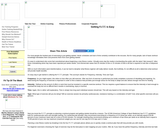
Explains the F.I.T.T. principle and how it can be used to help people begin a new fitness routine.

This resource provides helpful information to guide students in making their own personal fitness plan, including helping them find solutions for their excuses for not exercising.

In this resource students are introduced to information about different types of therapy and how therapy can help with mental and emotional support.

This resource provides information to help students understand the facts about menstruation.
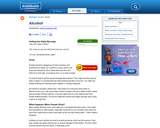
Students learn what happens when people drink, the meaning of alcoholism, and how to say no if asked to try alcohol.

Students look at how gender stereotyping may discourage young women from becoming involved in politics. Students begin by discussing what is meant by the terms "politics" and "political action."

Students learn about the how eyes work, eye exams, and the difference between being nearsighted and farsighted.
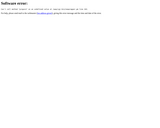
Activity that teaches students how quickly germas can spread.

In this lesson, students learn that germs can travel from one surface to another. Students learn how to eliminate germs by washing their hands with warm water and soap for at least 20 seconds and sign a pledge to help stop the spread of germs.

In this lesson students will identify a variety of fruits they can eat for dessert.

This article provides the students information about different foods.

An activity to guide students to make healthy food choices for themselves and their family.